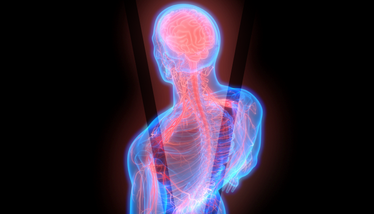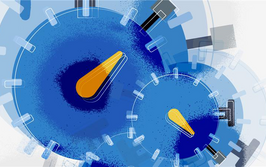Thoracic Spark
NervGen President and CEO Mike Kelly discusses the potential of the company’s investigational drug NVG-291 for spinal cord injury.
| 3 min read | Interview

Credit: Shutterstock.com
Every year, an estimated 500,000 people globally suffer from spinal cord injury and face an expected lifetime cost of care between $1 million and $4 million, depending on the severity and age of the injury. Existing treatments for spinal cord injuries are limited to surgical stabilization and physical rehabilitation, which result in just partial improvement. There are currently no FDA-approved treatments that can promote repair and improve function, although the NIH is looking into innovative neural devices that could improve post-injury quality of life.
Clinical-stage biotech company NervGen is hoping to address spinal cord injury by treating nervous system damage through its lead drug candidate, NVG-291. Based on the research of award-winning Case Western Reserve University Professor of Neuroscience Jerry Silver, the potential of NVG-291 attracted the attention of Mike Kelly, who now serves as NervGen CEO. We spoke with Kelly to find out more about the potential of NVG-291 for spinal cord injury patients.
Why did you join NervGen?
When I joined NervGen, NVG-291 was completing phase I safety studies in healthy volunteers and moving from preclinical trials to clinical trials in spinal cord injury, which represented an exciting challenge and opportunity to make a long-lasting impact on the lives of individuals with spinal cord injury.
NVG-291’s technology has the potential to enable the nervous system to repair itself following damage, whether due to injury or disease, holding immense possibility. We are currently investigating its potential to treat spinal cord injury, stroke, and amyotrophic lateral sclerosis (ALS). Multiple preclinical animal models have demonstrated that NVG-291 promotes repair mechanisms in the nervous system, including axonal regeneration, remyelination, and enhanced plasticity.
What are the challenges of treating spinal cord injury through pharmaceuticals?
The nervous system does have a capacity for natural self-repair, but it is limited by complex biological mechanisms, which makes it difficult to develop drugs that can effectively support nervous system repair in spinal cord injury. A breakthrough in the field happened when Jerry Silver’s team at Case Western Reserve University discovered that a family of molecules dubbed chondroitin sulfate proteoglycans (CSPGs) not only act to stabilize neuronal connections to ensure proper function of our nervous system under normal conditions, but also suppress nervous system repair when upregulated at the site of injury.
Silver’s work has shown that accumulation of CSPGs in the nervous system lesions inhibits axonal sprouting and the regeneration of new axons, as well as remyelination of the damaged ones. Based on this discovery, Silver’s lab identified a synthetic molecule called intracellular sigma peptide (ISP) that served as a prototype for NVG-291. ISP was found to alleviate the inhibitory effects of CSPGs and promote nervous system repair and functional recovery in animal models of spinal cord injury.
These findings are the preclinical scientific basis for the development of NVG-291.
The Medicine Maker Presents:
Enjoying yourself? There's plenty more where that came from! Our weekly Newsletter brings you the most popular stories as they unfold, chosen by our fantastic Editorial team!
As a small company, who are you collaborating with?
Our first collaboration was with Case Western Reserve University, where we licensed the technology. Since then, as a small company, we have partnered with Shirley Ryan AbilityLab to conduct our first proof-of-concept study in people living with spinal cord injury, and DP Clinical, a CRO that specializes in spine studies. Piramal, another CDMO, is working to streamline the manufacturing and purification process, as well as several other groups helping us to optimize our final product formulation. We are also working with spinal cord injury support groups including Wings for Life, who are financially supporting some of the costs of our clinical trial and helping to increase awareness of our activities within their support network.
What are your expectations for the near- and longer-term futures for NVG-291?
Long-term plans include further study of NVG-291 and our other pipeline product candidates in other central nervous system disorders, including stroke, ALS, multiple sclerosis, and Alzheimer's disease.
Nearer term, recruitment in our phase Ib/IIa clinical study for individuals with spinal cord injury is going well and we anticipate completion of enrollment in the first cohort of chronic SCI patients in Q3 2024. It is a 16-week trial, so we expect results shortly after the last patient completes the study. We anticipate the data readout from the chronic cohort patient group to indicate improvements in electrophysiology and clinical measures. After that, our goal is to have an end-of-phase II meeting with the FDA and advance NVG-291 forward to the next phase of development.



















